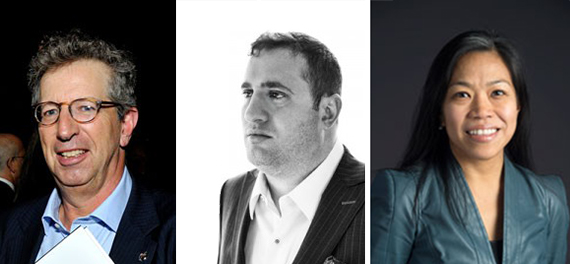Trending
If it LEEDs, it bleeds (money)
Frustrated developers turning away from environmental certification: panel

As far as trends among residential developers go, hyping an apartment building with its LEED certification may be going the way of the fedora.
While buildings like Forest City Ratner’s [TRDataCustom] 369-unit 80 DeKalb in Fort Greene and AvalonBay Communities’ 823-unit tower at 214 Duffield Street in Downtown Brooklyn were built to LEED status, others are more frequently shunning the design cabal and trailblazing their own sustainability standards.
“We’ve seen more and more sustainable projects and less and less LEED projects,” JDS Development Group CEO Michael Stern, who is working on what will be Brooklyn’s tallest building at 9 DeKalb, said during a summit on the borough’s real estate scene Wednesday.
“I think the LEED criteria is totally arbitrary and LEED has basically devolved into a self-sustaining revenue machine for LEED consultants without actually moving the bar that much,” Stern added. “You can have a LEED project basically anywhere near transportation. You qualify for enough points if you pay enough money.”
Instead, developers are turning more toward non-LEED projects like Nava Companies’ passive house at 210 Pacific Street, a 10-unit condominium building in Boerum Hill that keeps energy use low by creating what is essentially an airtight building.
Stern sat on a keynote panel titled “Brooklyn Power Playas” along with Rudin Management’s Bill Rudin, New York City Economic Development Corporation president Maria Torres-Springer, ODA New York founder Eran Chen and Halstead Property Development Marketing’s Stephen Kliegerman during the summit hosted by Freedom Mortgage at the Marriott New York in Downtown Brooklyn.
Kliegerman, whose firm handled marketing at 210 Pacific Street, said that while the market recognizes some intrinsic value in sustainability features, it’s hard to put a dollars-and-cents number to it.
“It’s hard to quantify what the value is on the for-sale side,” he said.
The panelists chatted about a number of hot topics in the borough, including projects like the 400,000 square feet of office space planned for the NYCEDC-backed 420 Albee Square and Rudin and Boston Properties’ Dock 72 at the Brooklyn Navy Yard, urban design like ODA’s pair of large-scale rental projects at the old Rheingold Brewery site and the impending shutdown of the L Train.
“There will be a little pain for a lot of gain,” said Kliegerman, explaining the long-term benefits of the infrastructure investments will outweigh the short-term damage a lack of service could do to landlords.
There were others, though, who took a different view on the MTA’s controversial plan. During another panel later in the day, Citi Habitats’ David Maundrell joked that competing landlords may have been pulling the strings at the agency behind the scenes.
“I’m a firm believer that the developers in Downtown Brooklyn are the ones that pushed the MTA to close the L Train,” Maundrell quipped.




